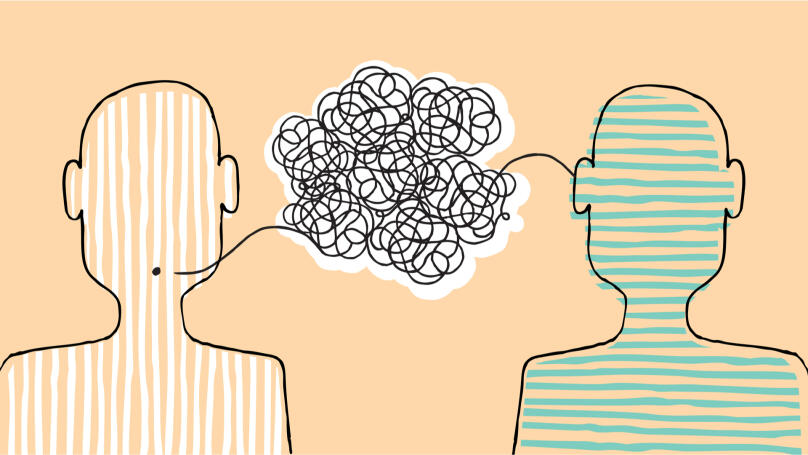Kinesics
Kinesics definition

Kinesics studies nonverbal communication between people: how gestures, postures, facial expressions, the timbre of voice give away our true thoughts and intentions, even if we want to hide them. Kinesics is a separate discipline in psychology dedicated to the study of the language of nonverbal communication. In business, the next definition is more commonly used: kinesics is the language of nonverbal communication.
People always use nonverbal signals, such as facial expressions and gestures, in communication. These signals can be a much more informative source of data than speech: if you know kinesics, the person you are talking to can "reveal" you much more than they intended.
One of the first studies of kinesics dates back to the eighteenth century. In 1792, a pastor from Zurich, John Caspar Lafater, published his 'Essay on physiognomy,' in which he described how facial expressions and body configurations link to a person's personality characteristics. Charles Darwin, the author of the theory of evolution, continued to study nonverbal communication. The term "kinesics" itself appeared only in the twentieth century.
In addition to kinesics, it is important to consider other dimensions of non-verbal communication. These include such components of nonverbal communication as:
- Proxemics - studies how people express their attitudes using a spatial component, such as choosing their distance when speaking to an interlocutor.
- Prosody - studies the sound design of speech: how we emphasise words through intonation, pauses, and so on
- Tacesics - studies the tactile element of communication, such as touch.
The importance of the nonverbal component in our everyday experience is hard to overestimate: we unconsciously read and analyse a huge amount of non-verbal signals from interlocutors. In business communication, the value of non-verbal cues helps establish closer contact with a business partner and guess their true intentions.
Kinesics and business etiquette

In business communication, many phrases, gestures and even the distance between interlocutors get set by the cultural code. In different cultures, these can vary greatly: in the US, for example, business partners always shake hands, while in Japan, they bow to each other.
Kinesics includes many components. For business communication, the first component to pay attention to is the gaze. Firstly, we should analyse whether the partner seeks to establish visual contact: if they do, this indicates interest in the topic of conversation. Nevertheless, if your business partner avoids making eye contact with you, it may not be a sign of disinterest but banal fatigue.
You should pay attention not only to the person's gaze but also to any non-verbal means of communication. In business ethics, nonverbal communication tools such as facial expressions, gestures, and posture are imperative. You can "read" the pose of the interlocutor by analysing it along three dimensions:
- openness-closedness. Someone in a closed position tries to use gestures to block out the other person: they cross their arms and legs, lean to the side, try to put an object between themselves and the other person if the negotiations held at a table;
- dependency-domination. Usually, a person who expresses dependence looks up from below and lowers their head. The one who wants to dominate does the opposite: they try to look down on the other person, patronisingly patting the other person on their arm or shoulder;
- harmony-confrontation. If a person is in a mood for confrontation, they involuntarily adopt an aggressive posture, clenching their hands into fists or placing their hands on their hips.
When analysing nonverbal signals, it is essential to bear in mind that the psychology of communication is not unequivocal. Identifying the true motives of the interlocutor can be challenging. Nevertheless, kinesics often helps us better understand the true thoughts of the conversation partner and unravel their real motives. The most unambiguous gestures are the most common gestures people use. These gestures can unintentionally express a person's true attitude to the speaker's words or a problem.
Examples of kinesics

Kinesics is communication. Therefore nuances and semitones are very vital in its interpretation. Interpreting a specific gesture in a given situation may be challenging. However, some gestures are interpreted unambiguously by modern science. Here are some examples:
- Likewise, a desire to cover one's ears when a person says unpleasant things, such as scratching or rubbing one's earlobe, is a tell-tale sign.
- A person who lies tries to prevent themselves from doing so by covering their mouth with their hand. Children may repeat this very gesture, and adults often try to mask it. For instance, they yawn and cover their mouth with their hand or scratch their nose.
- When someone rests their chin on their hand, this usually indicates boredom or tiredness.
- If the person glances at the door, turning their feet towards the exit, this may not just be a non-verbal signal but a hint that it is time to end the conversation.
- When the interlocutor strokes or scratches their face or neck, it often indicates that they have not yet made a final decision and are actively mulling things over. Similarly, a person who is nibbling or wiping their glasses may also be contemplating something.
Kinesics, the language of dynamics, can be used in negotiations and as an expressive means of advertising. There are many benefits to learning kinesics because you can "read the minds" of other people. Books on kinesics can help you gain some knowledge of the science, but you should take a course ideally.























